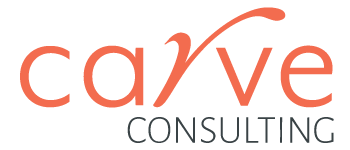Leadership & Manager Capability.
The potential of an organisation is limited only by the capability of its leadership.
Even with the highest levels of education, why don’t leaders reach their promise as an individual or as a collective?
Because leaders are developed, not born. As humans we are often blind to our belief systems, habits of mind and the impact that creates.
By building emotional intelligence through greater self awareness, awareness of others and a greater understanding of the dynamic between the two, leaders and emerging leaders can develop the capability to inspire their teams to create positive change.
Before you are a leader, success is all about growing yourself. When you become a leader, success is all about growing others.
– Jack Welsh
-

How We Can Help
Carve Consulting provides bespoke programs designed for senior organisational leaders and managers to gain insight and evidence of their impact and implement strategies for enhanced sustainable performance. Programs may be designed to incorporate:
- Tailored 1:1 coaching
- Facilitated strengths based team development sessions
- 360 degree assessments (we recommend The Leadership Circle)
- Manager development training
- Courageous Conversations group sessions
Our team of consultants bring the ideal mix of commercial lived experience and in-depth understanding of human behaviour. Our consultants are matched to a project dependant on the industry and profile of the leaders involved.While we’ve seen outstanding results working with isolated leaders, the most effective initiatives are led from the top and engage each level of an organisation. By gaining insight into embedded systems and behaviours, a team can move towards new standards in personal leadership, accountability and performance.
Work We’ve Done.
We have worked with leaders and managers in organisations across a broad range of industries including Arts, Media, Design, Logistics, and Technology to create positive change in a range of common challenges.
- Leadership development program including individual 360 and coaching for SLT followed by team offsite focused on improved collective impact on the organisation.
- Experienced technical specialist promoted into team management looking to develop capabilities and skills and greater emotional intelligence.
- Dysfunctional leadership team focused on raising the undiscussed issues, recognise shared objectives and agree ways of working to become more effective.
- Leadership team adapting to a changing market and building a culture of accountability and collaboration.
- Manager development workshops to build capability including team accountability, skill development and courageous communication.
-

I have had many people comment they are proud that I have changed the way I operate and its having a positive affect on delivering the right outcomes and holding people to account in a collaborative way. We’ve created some great outcomes in Q1.
Specialist Technical ManagerTertiary Education -

Our SLT has shifted from what felt like separate teams to working together and embracing the differences instead of frustration. The 360 and offsite have been a positive investment.
CEOArts Industry
Leadership Development Program: A Case Study
This case study examines the transformative journey of Tom*, a highly regarded technical expert, with nearly 20 years of experience at the same organisation, who faced several challenges related to career advancement, work-life balance, delegation and effective communication. Through the coaching and feedback process, the individual experienced a profound shift in mindset and achieved significant outcomes that positively impacted his personal growth, team dynamics, and organisational effectiveness.
Situation
The client had established a reputation as the go-to fix-it person within their organisation and took pride in solving issues and being relied upon for their expertise. However, this led to a deeply ingrained belief that he needed to be across every detail, being in control of everything so as to never to be caught out ‘not knowing’. The knock-on effect with the broader IT team resulted in poor delegation and a lack of autonomy in decision-making. He worked long hours, often exceeding 16 hours per day, and sacrificed weekends, which began to take a toll on his health and strained family relationships. Furthermore, he felt frustrated with being stuck in an operational role and not being considered for more strategic positions.
Outcomes
- Shifted Mindset and Priorities: Through the coaching process, Tom redefined his role’s purpose and reframed his value. He was then able to realign his priorities, creating mental and physical capacity to focus on strategic matters and professional development.
- Improved Work-Life Balance: By establishing clear personal and team boundaries, implementing constructive communication practices and establishing delegation with his team, he successfully reduced his working hours to 10-12 hours per day and eliminated weekend work, thereby improving his health and enhancing family relationships.
- Enhanced Communication: Tom improved his communication with the senior leadership team (SLT) by learning how to deliver succinct and focused messages, enabling more effective and efficient interactions.
- Ambiguity & Vulnerability: With his shift in mindset, Tom grew more comfortable with trusting this team and getting out of the detail. He also grew more comfortable dealing with ambiguity and not being rigid in his approach.
- Empowered Team: Tom created development plans for each team member, providing them with stretch assignments and autonomy matched to their individual capabilities. This approach fostered a culture of open discussion, collaboration, and psychological safety within the team.
- Increased Executive Presence: Tom’s participation in senior meetings improved significantly as he provided insightful and valuable contributions. His enhanced executive presence garnered recognition from senior leaders, who shared they were re-elevating his reputation within the organisation.
- Improved Team Visibility and Processes: With increased capacity, Tom actively worked to increase his team’s visibility across the organisation. He embedded and ensured adherence to processes within the IT department and effectively collaborated with other departments, resulting in improved operational efficiency and cross-functional collaboration.
- Strategic Contributions: Tom’s increased capacity and operational improvements allowed him to join strategic committees, enabling input into longer-term strategic planning, which was a significant career advancement opportunity.
- Expanded Network and Reputation: As a result of his proactive involvement in strategic committees and improved visibility, Tom expanded his personal network and gained recognition from senior leaders, further enhancing his professional reputation.
- Renewed Energy and Positive Outlook: Tom experienced a sense of reenergisation and regained a positive outlook on his professional development and future opportunities.
Process
The leadership development program commenced with a six-month coaching engagement, supplemented by a simple tailored 360-degree feedback survey. The coaching process aimed to challenge the participants existing mindset, redefine their role’s purpose and priorities, and equip them with the necessary skills and strategies to effect positive change and close the gap from who he wanted to be as a leader and how he felt he was being perceived. The 360-degree feedback survey provided valuable insights into the participant’s strengths, weaknesses, and areas for improvement, enabling a structured approach for the coaching session and comprehensive action plans.
Conclusion
This case study demonstrates the transformative power of a comprehensive individual leadership development program that includes a combination of 1:1 coaching and 360-degree feedback. Through this process, Tom overcame his entrenched beliefs and habits, achieved a healthier work-life balance, improved his working relationships with peers, stakeholders and his team, improved his teams collaboration and effectiveness, enabled their development and career progression, and enhanced his professional reputation to position himself for future career advancement.
* name changed to protect privacy
Ready to take the next step?
If you’re interested in learning about how you can improve the capability of your leaders and managers, please get in touch.
